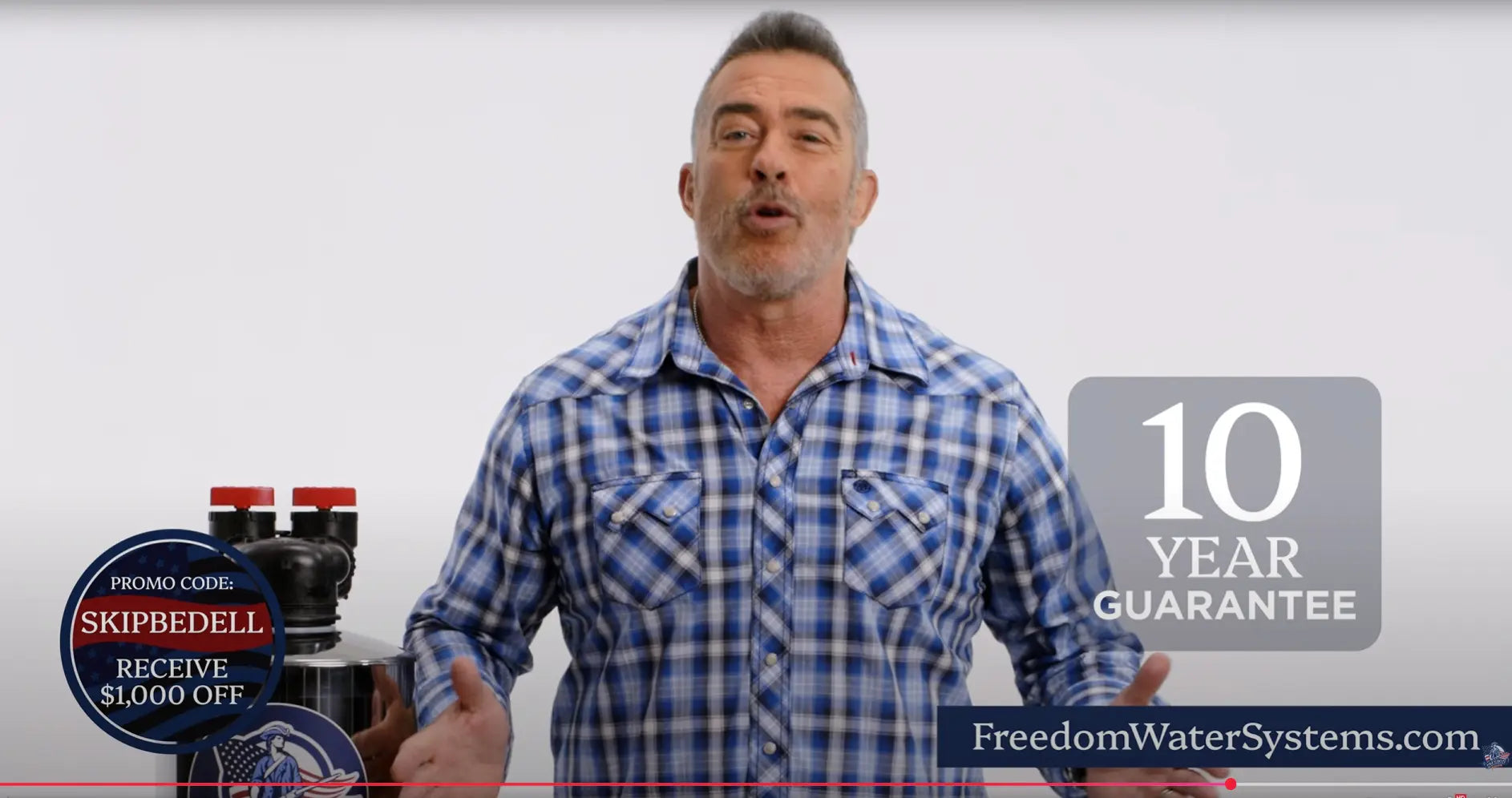Why You Need to Be Concerned About Pharmaceuticals and Industrial Chemicals in Your Water
For generations, families have trusted chlorine to keep drinking water safe. It is true that chlorine kills bacteria, viruses and organic matter, but the problem is chlorine has proven to be carcinogenic. Today, chemicals from medications, factories, and farms are showing up in our tap water even after treatment. A home water filtration system provides essential protection that chlorine alone cannot offer, keeping your family's water safer and cleaner for years to come.
Chlorine Cannot Do It All
Chlorination revolutionized public health in the early 1900s by eliminating diseases like cholera and typhoid. But twenty-first century contaminants look very different. Most municipal treatment plants were never designed to remove modern chemicals like antibiotics, antidepressants, hormones, and industrial runoff.
According to the EPA, more than 80,000 synthetic chemicals are used in the United States, and many can end up in our water supply. Even at low levels, long-term exposure to these contaminants can affect human health. Lead can harm brain development, pesticides can disrupt hormones, and PFAS, known as "forever chemicals," can linger in the body for decades.
Drugs in Your Tap Water
Pharmaceuticals have quietly become one of the most concerning sources of water contamination. Studies by the U.S. Geological Survey found traces of medications such as painkillers, antibiotics, and birth control hormones in surface water and even in treated drinking water.
When unused pills are flushed or excreted, treatment plants cannot fully remove their complex chemical structures. Hormones like estrogen have been shown to affect fish reproduction, while antibiotics in water can promote drug-resistant bacteria, according to research from the National Institutes of Health.
These compounds build up slowly and invisibly. Even small concentrations may impact hormone balance or immune function over time. That is why modern homes need advanced filtration, not just basic chlorine disinfection, to remove pharmaceuticals and keep tap water safe.
Industrial Chemicals Still Linger
Industrial pollution is another major threat to clean water. Factories, mining, and waste sites have released thousands of chemicals into the environment. PFAS chemicals, once used in nonstick cookware and firefighting foam, are especially dangerous. The Environmental Working Group (EWG) reports PFAS contamination in the drinking water of millions of Americans. These chemicals are linked to cancer, thyroid disease, and immune dysfunction.
Lead remains a problem too. Cities like Flint, Michigan, showed how corroded pipes can contaminate an entire community's water. Even tiny amounts of lead can cause lifelong developmental harm in children. Pesticides from agriculture add yet another layer of toxins, washing into groundwater and rivers after every rainfall.
The result: modern water systems are battling pollutants that traditional treatment was never meant to remove.
The Hidden Health Costs
The danger with most chemical contaminants is that they are invisible. Your water can look and taste fine while still containing pharmaceuticals or PFAS. Over time, this silent exposure may contribute to chronic health issues such as hormone disruption, immune stress, or developmental problems.
The Centers for Disease Control and Prevention (CDC) notes that even low-level exposure to lead or pesticides can affect brain function and heart health. For families, especially those with children or pregnant women, this risk is too great to ignore.
Unfortunately, lower-income and rural communities are often hit hardest. Many rely on private wells that are not regulated or tested regularly. Without proper testing or filtration, those households face higher exposure risks every single day.
Learn how a whole home water filtration system works together with reverse osmosis to remove PFAS and pharmaceuticals for complete protection at every tap.
How to Protect Your Water
Solving this problem requires both prevention and personal protection. Governments and industries must reduce pollution at the source, but at home, you can take direct action today.
The EPA recognizes that advanced filtration methods like reverse osmosis (RO) and activated carbon are among the most effective ways to reduce pharmaceuticals, pesticides, PFAS, and lead. RO systems work by forcing water through a special membrane that blocks contaminants at the molecular level, leaving you with clean, great-tasting water.
For many families, installing a point-of-use RO system is what they choose, but this only delivers water from a single faucet, not your whole home. Many of these contaminants are absorbed when you bath, the Freedom Water Guardian Whole Home System, offers peace of mind at EVERT tap in your home, so you can feel safe no matter you and your family are using the water for. For whole home protection, the ECO-X Series uses multistage carbon and catalytic filtration to reduce chlorine, chloramine, VOCs, and other city water pollutants throughout your plumbing. The ECO-X also will help prevent scale damage from hard water.
For compact spaces or modern kitchens, our Hydro-Pure Tankless Reverse Osmosis System delivers fast-flowing, great-tasting water without bulky storage tanks.
The Bottom Line
The age of trusting chlorine alone is over. Pharmaceuticals, pesticides, and industrial chemicals represent a new generation of invisible threats that require smarter solutions. By combining modern filtration with awareness and responsible water practices, families can take control of their water quality and their health.
✓ Ready to Protect Your Water?
Explore our advanced filtration systems designed to remove pharmaceuticals, PFAS, and other chemical contaminants from your home's water supply.
FAQs About Water Contaminants and Filtration
Can chlorine remove pharmaceuticals or PFAS from water?
No. Chlorine kills bacteria but does not remove chemicals like pharmaceuticals or PFAS. A reverse osmosis drinking water system or whole house water filtration system is needed to effectively reduce these contaminants.
Are small amounts of these contaminants really dangerous?
Yes. Even trace exposure over many years can build up in the body and cause health issues like hormone disruption or developmental problems in children.
How does reverse osmosis make water safer?
RO systems use a semipermeable membrane that blocks up to 99 percent of contaminants, including heavy metals, fluoride, PFAS, and dissolved solids.
What is the best home water filter for chemical contaminants?
A combination of reverse osmosis for drinking water and a whole home system like the ECO-X for chlorine and VOC reduction provides comprehensive protection.
How can I find out what is in my water?
Ask your local utility for a water quality report or test your water through an accredited lab. The results can guide you in choosing the right filtration system.
Sources
Environmental Protection Agency (EPA); Environmental Working Group (EWG); Centers for Disease Control and Prevention (CDC); National Institutes of Health (NIH); U.S. Geological Survey (USGS).







